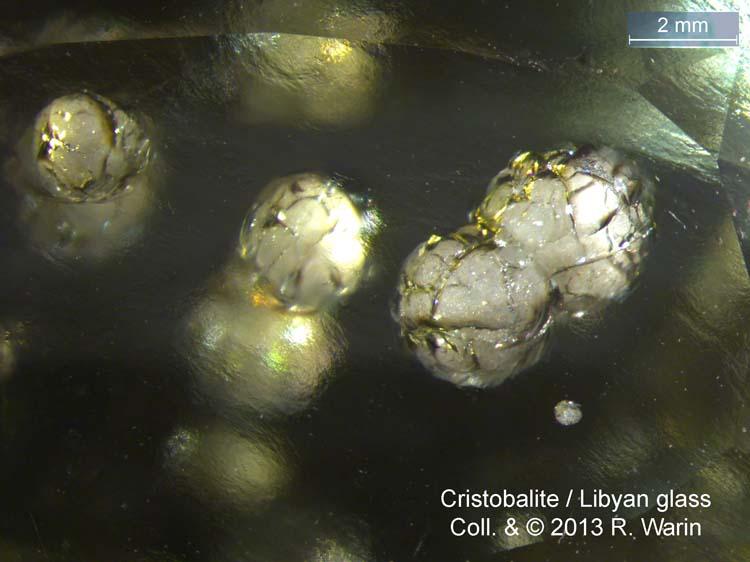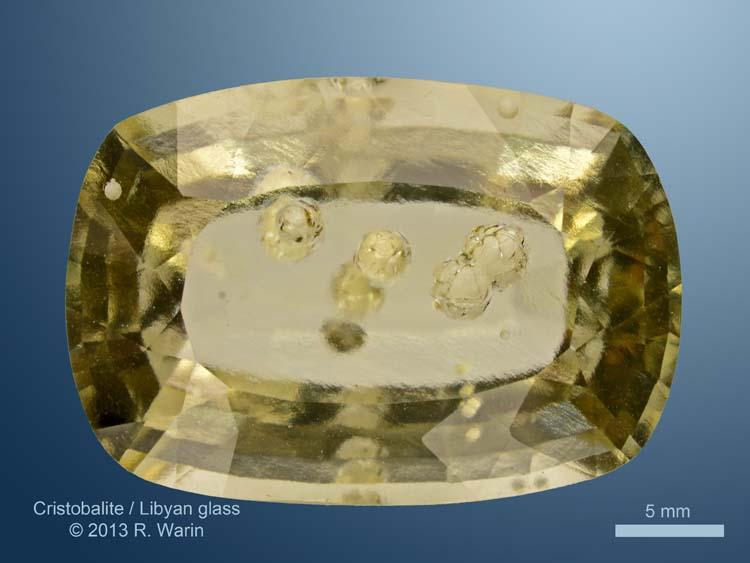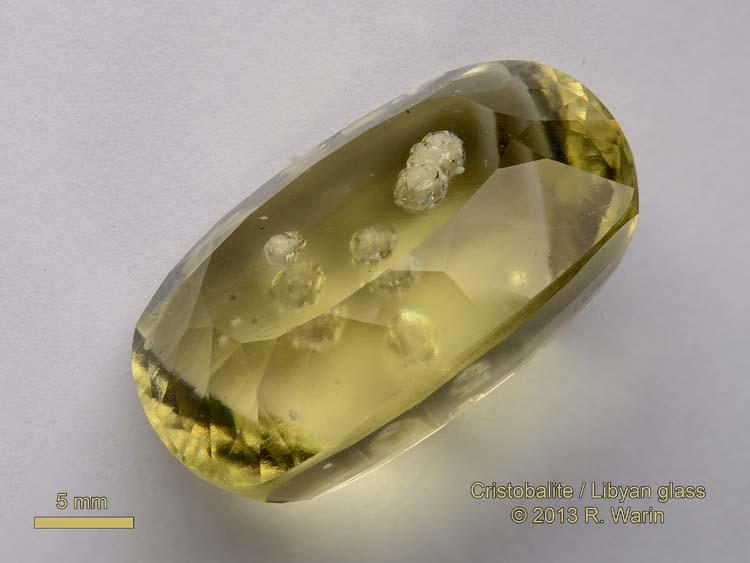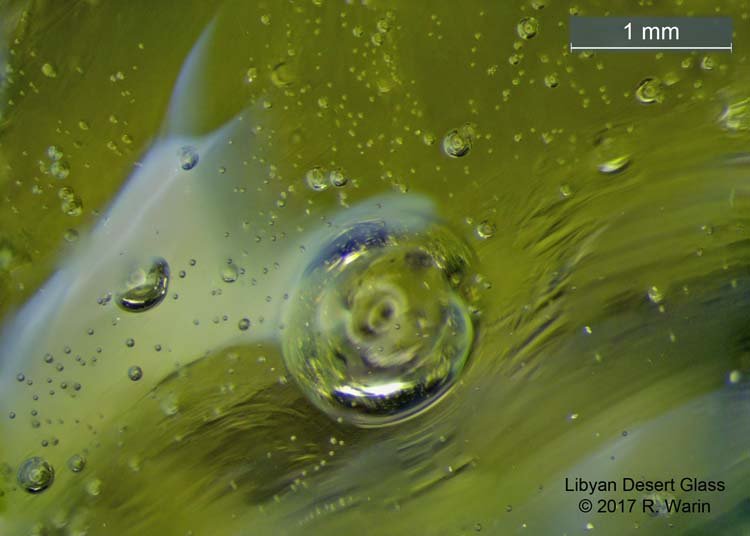| View previous topic :: View next topic |
| Author |
Message |
Roger Warin

Joined: 23 Jan 2013
Posts: 1250



|
 Posted: Jan 27, 2013 11:19 Post subject: Cristobalite / Libyan desert glass Posted: Jan 27, 2013 11:19 Post subject: Cristobalite / Libyan desert glass |
|
|
Cristobalite
Libyan Glass
Extraterrestrial material? No.
Cristobalite is a high temperature silica polymorph (SiO2).
Libyan Glass is a terrestrial material, with a content of 98 wt % silica. It’s the purest natural glass on Earth.
It often contains inclusions of cristobalite.
Other dark inclusions show that they are enriched in meteoritic elements in proportions typical of chondrites.
This glass is thought due to the impact of a meteorite on a silica-rich rich target, but discussions are still many.
| Description: |
Cristobalite
Cristobalite / Libyan Glass |
|
| Viewed: |
17629 Time(s) |

|
| Description: |
|
| Viewed: |
17609 Time(s) |

|
| Description: |
Libyan Glass with inclusions of cristobalite
gem quality |
|
| Viewed: |
17694 Time(s) |

|
|
|
| Back to top |
|
 |
John S. White
Site Admin

Joined: 04 Sep 2006
Posts: 1298
Location: Stewartstown, Pennsylvania, USA



|
 Posted: Jan 27, 2013 11:58 Post subject: Re: Cristobalite / Libyan desert glass Posted: Jan 27, 2013 11:58 Post subject: Re: Cristobalite / Libyan desert glass |
|
|
Those inclusions are fantastic. Many thanks for sharing and also for the very good information relating to this glass.
How common are these inclusons? I have seen a lot of the desert glass but don't recall ever seeing such inclusions.
John
_________________
John S. White
aka Rondinaire |
|
| Back to top |
|
 |
Roger Warin

Joined: 23 Jan 2013
Posts: 1250



|
 Posted: Jan 27, 2013 15:46 Post subject: Re: Cristobalite / Libyan desert glass Posted: Jan 27, 2013 15:46 Post subject: Re: Cristobalite / Libyan desert glass |
|
|
Hello John,
Thank you for your comment.
These inclusions are not uncommon (perhaps not so fine).
What seems strange is that quartz does not crystallize. SiO2 remains in a vitreous state. It seems that the crystallization of quartz is much easier from hydrothermal solutions (mobility of molecules).
In the case of the Libyan glass, molten glass was initially allowed by a process of exsolution, crystallization of cristobalite (I do not know the nature of low or high temperature cristobalite phase).
In other words, SiO2 began to crystallize in polymorphic form compatible with these high temperatures : cristobalite and not quartz.
These spheres of crystals are expelled from the molten glass, which remained in the vitreous state, forming internal captive crystalline bubbles because the high viscosity and the low density difference.
I guess a small contraction (induced by a decrease of temperature) of the cavity created internal wrinkles that give this beautiful golden net effect, an effect of optical refraction.
The Libyan glass is the purest natural glass (98 wt.%). It melts at 1700 ° C, i.e. 500 ° higher than other natural glasses. This is really great due to its pure state. For example, the presence of feldspar lowers the melting point.
Roger.
|
|
| Back to top |
|
 |
Roger Warin

Joined: 23 Jan 2013
Posts: 1250



|
 Posted: Jan 16, 2017 11:27 Post subject: Re: Cristobalite / Libyan desert glass Posted: Jan 16, 2017 11:27 Post subject: Re: Cristobalite / Libyan desert glass |
|
|
Hi,
Libyan Desert Glass with Schlieren and bubbles.
These Schlieren (streaks) materialize the flux lines by deflecting light because of the existence of a gradient of refractive index. These index differences are correlated with the gradient of the flux density and the high viscosity.
| Mineral: | Silica or LDG |
| Description: |
|
| Viewed: |
13491 Time(s) |

|
|
|
| Back to top |
|
 |
|





